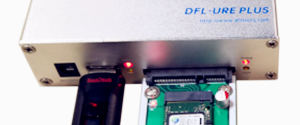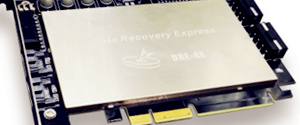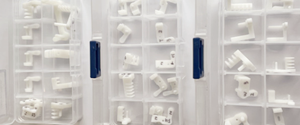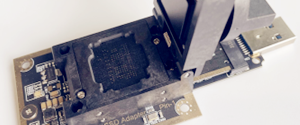Low-Level Format, Zero-Fill and Diagnostic Utilities
Older hard disks required periodic low-level formatting by the system configurator or end-user. To facilitate this, low-level format utilities were created. These are small programs written to control the low-level formatting process for the hard disk. The hard disk controller would normally include one of these programs in a ROM chip in hardware, enabling access to the software without requiring any drives to be running in the system, and thus avoiding a possible “chicken and egg” quandary. In addition, more sophisticated, third-party utilities were available that would perform an LLF and also do other related features such as scanning for bad sectors or analyzing the drive to determine an optimal interleave setting. These would typically be loaded from a floppy disk.
Low-level formatting an older hard disk could be a rather complicated procedure, particularly for one who was not very familiar with PCs and hard disks. Various factors needed to be taken into account, such as defect mapping and setting the interleave factor. The particular conditions of the drive when formatting were also important: due to the vagaries of stepper-motor actuators, doing an LLF when the drive was very cold or very hot could lead to errors when the drive returned to a more normal temperature. Even the orientation of the drive when it was formatted was an issue.
As I have said (probably too often, sorry) modern drives do not need to be low-level formatted by the end user, and in fact cannot be LLFed outside the factory due to their precision and complexity. However, it seems that the need to LLF hard disks on the part of users has never gone away. Like some primordial instinct, many PC users seem to have a fundamental desire to LLF their modern disks. Maybe it is built into the genetic code in some way yet undiscovered. ;^) In fact, even if it were possible, the vast majority of the time that someone “needs” to LLF a hard disk today, it is not really necessary. Many users jump quickly to wanting to try an “LLF” whenever they have a problem with their hard disk, much the way many jump to re-installing their operating system whenever it gives them trouble.
Hard drive manufacturers have created for modern drives replacements for the old LLF utilities. They cause some confusion, because they are often still called “low-level format” utilities. The name is incorrect because, again, no utility that a user can run on a PC can LLF a modern drive. A more proper name for this sort of program is a zero-fill and diagnostic utility. This software does work on the drive at a low level, usually including the following functions (and perhaps others):
* Drive Recognition Test: Lets you test to see if the software can “see” the drive. This is the first step in ensuring that the drive is properly installed and connected.
* Display Drive Details: Tells you detailed information about the drive, such as its exact model number, firmware revision level, date of manufacture, etc.
* Test For Errors: Analyzes the entire surface of the hard disk, looking for problem areas (bad sectors) and instructing the integrated drive controller to remap them.
* Zero-Fill: Wipes off all data on the drive by filling every sector with zeroes. Normally a test for errors (as above) is done at the same time.
When most users today talk about “low-level formatting” a drive, what they are really talking about is doing a zero-fill. That procedure will restore a functional drive (that is, one that does not have mechanical problems) to the condition it was in when received from the factory. There are occasions when a modern hard disk can become so badly corrupted that the operating system cannot recover it, and a zero-fill can help in this situation. Stubborn boot sector viruses for example can be hard to eradicate without resorting to low-level intervention. Since the zero-fill cleans all programs and data off the drive it will get rid of almost any data-related problem on the drive, such as viruses, corrupted partitions and the like. Just remember that it’s a bit like burning down your house to get rid of termites: you lose everything on the drive.
This type of utility can also be used to “hide” bad sectors by telling the drive to remap them to its collection of spares. Just remember that a drive that continues to “grow” bad sectors over time is one whose reliability is highly suspect. I discuss this matter in more detail here.
Note:
* Only use a low-level zero-fill or diagnostic utility designed for your particular hard disk. You can download one for free from your drive manufacturer’s web site. Even though damage probably won’t result from using the wrong program, you may lose data and you may also complicate any warranty service you try to have performed on the drive. (Technical support people at “Company X” generally don’t like to hear that you used a utility on their drive written by “Company Y”.)
* Always back up your data before you use a low-level utility, and make sure that you carefully follow all of the instructions provided.
* Never run a low-level disk utility from within a multi-tasking operating system such as Windows 9x. Other programs running in the background could interfere with the utility. Restart the computer in MS-DOS mode first, or reboot the computer from a floppy.
Data recovery Salon welcomes your comments and share with us your ideas, suggestions and experience. Data recovery salon is dedicated in sharing the most useful data recovery information with our users and only if you are good at data recovery or related knowledge, please kindly drop us an email and we will publish your article here. We need to make data recovery Salon to be the most professional and free data recovery E-book online.
World’s Top Data Recovery Hardware Tools

Easy to use at good price
Recover SATA, IDE, External HDDs, NVME SSDs, etc Order Now here
POTABLE DEVICE & NVME SSD RECOVERY TOOL

Recover USB Device and NVME SSDs at high speed! Read Details here.
DFL-PCIE DATA RECOVERY RECHARGE

Best data recovery hardware tool to start a data recovery business, read details here
RECOVER SCRATCHED HDDS

Recover lost data from scratched hard drives, read details here.
SURFACE PRO. RECOVERY
BEST HEAD REPLACEMENT TOOLS

The most cost-effective head replacement tools for Seagate, WD, Samsung, Hitachi, Toshiba, Fujitsu

